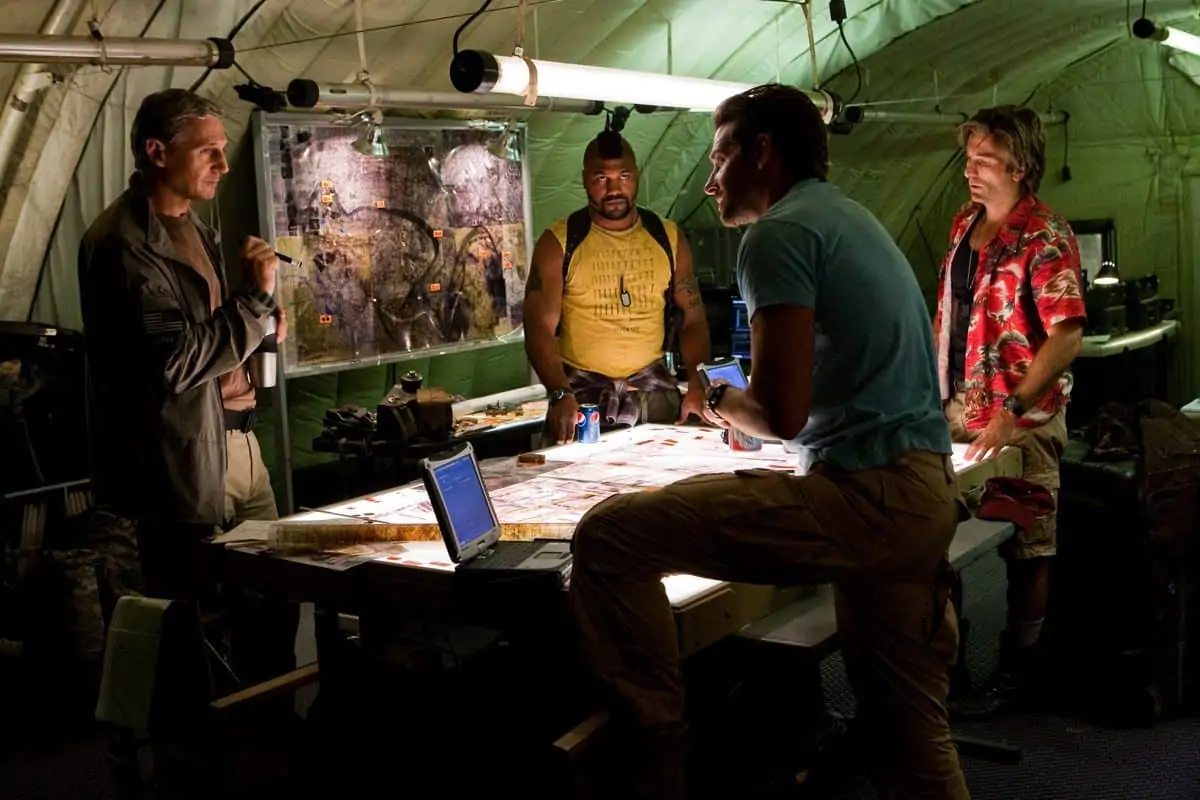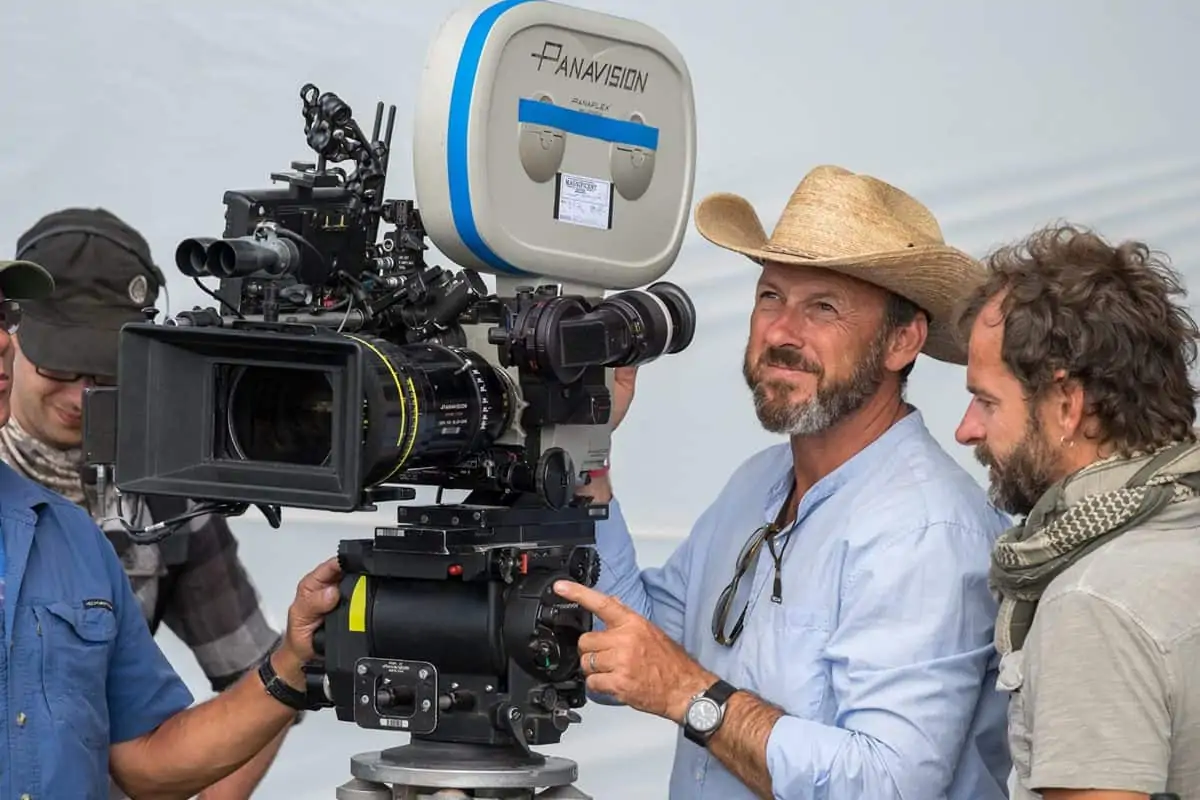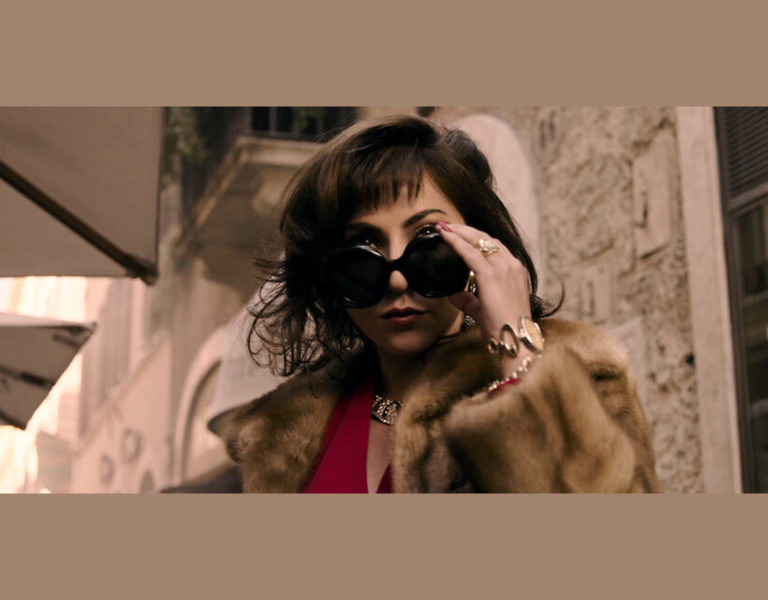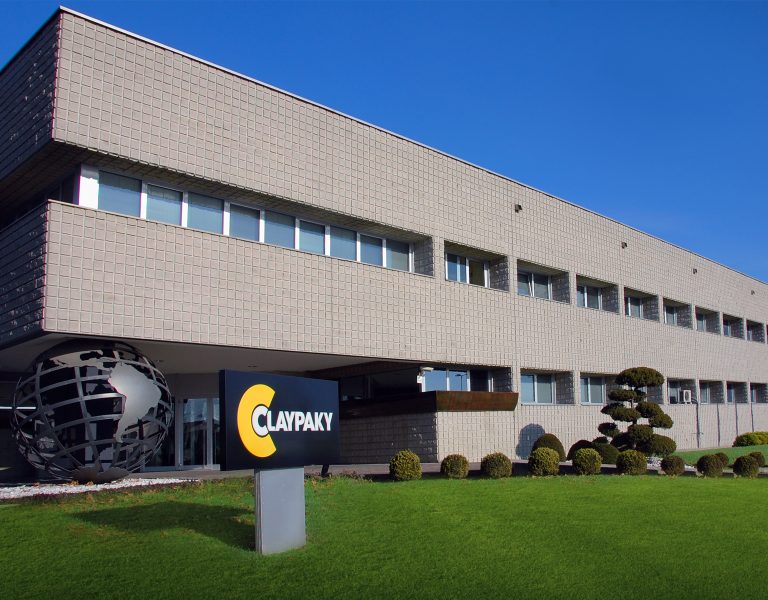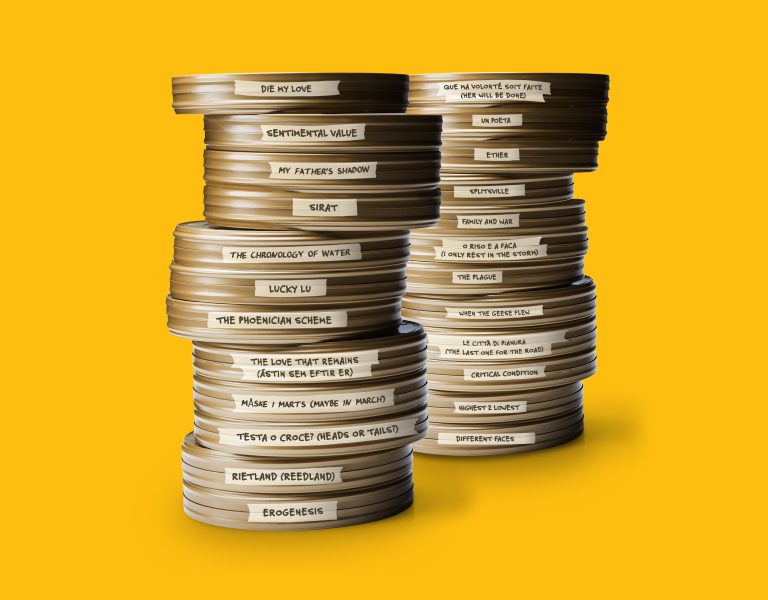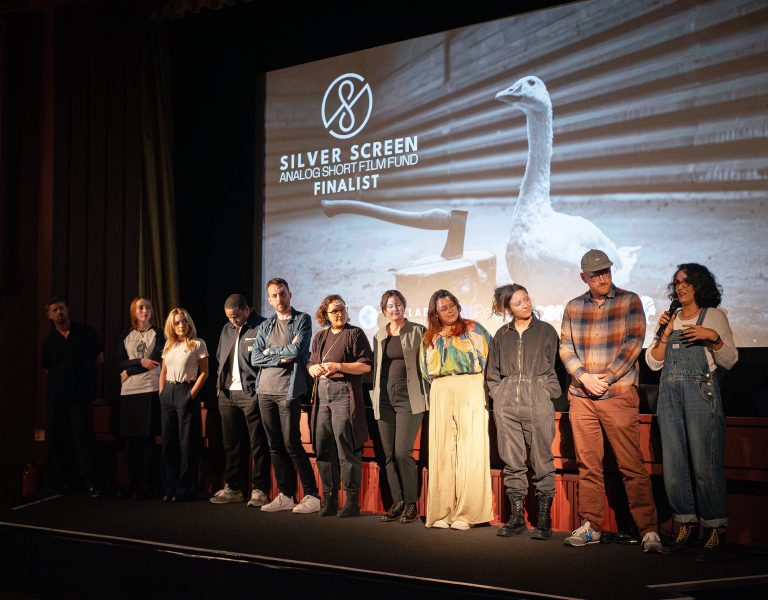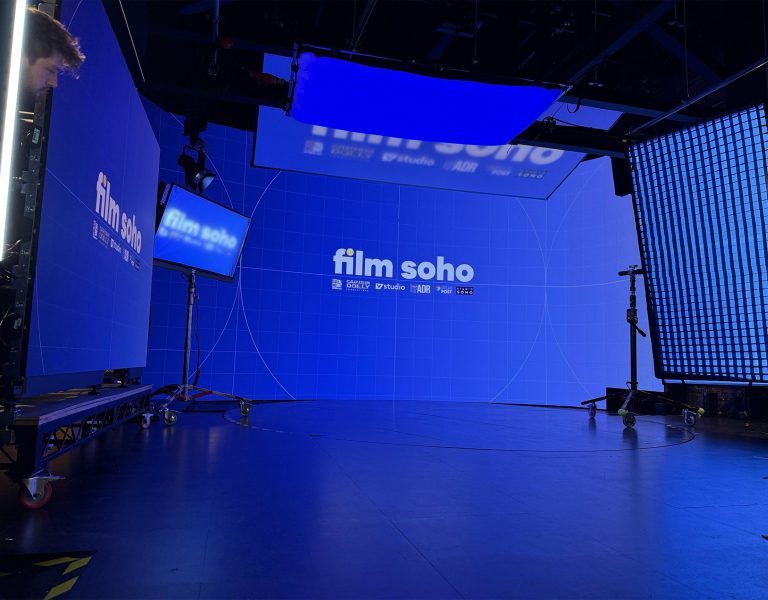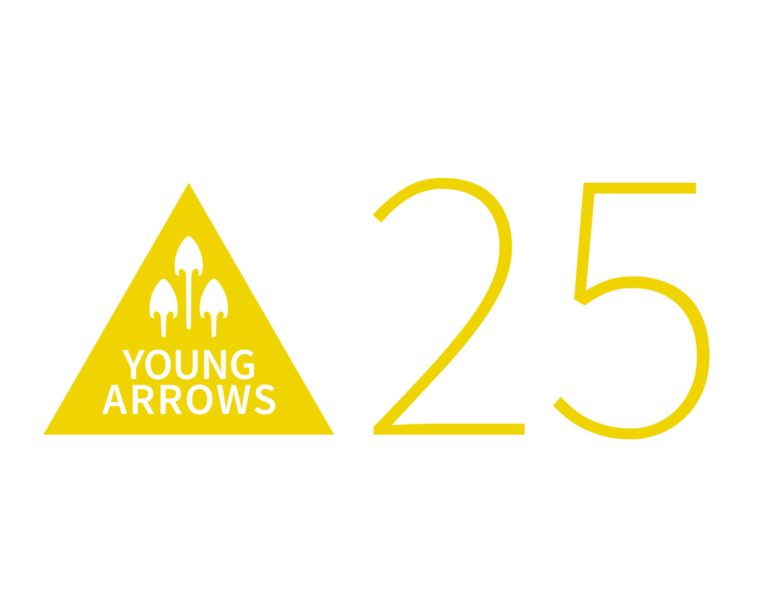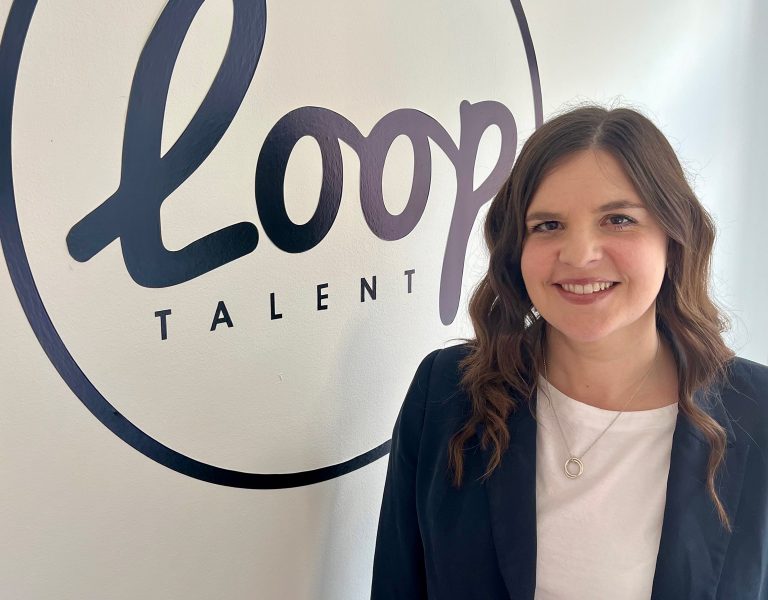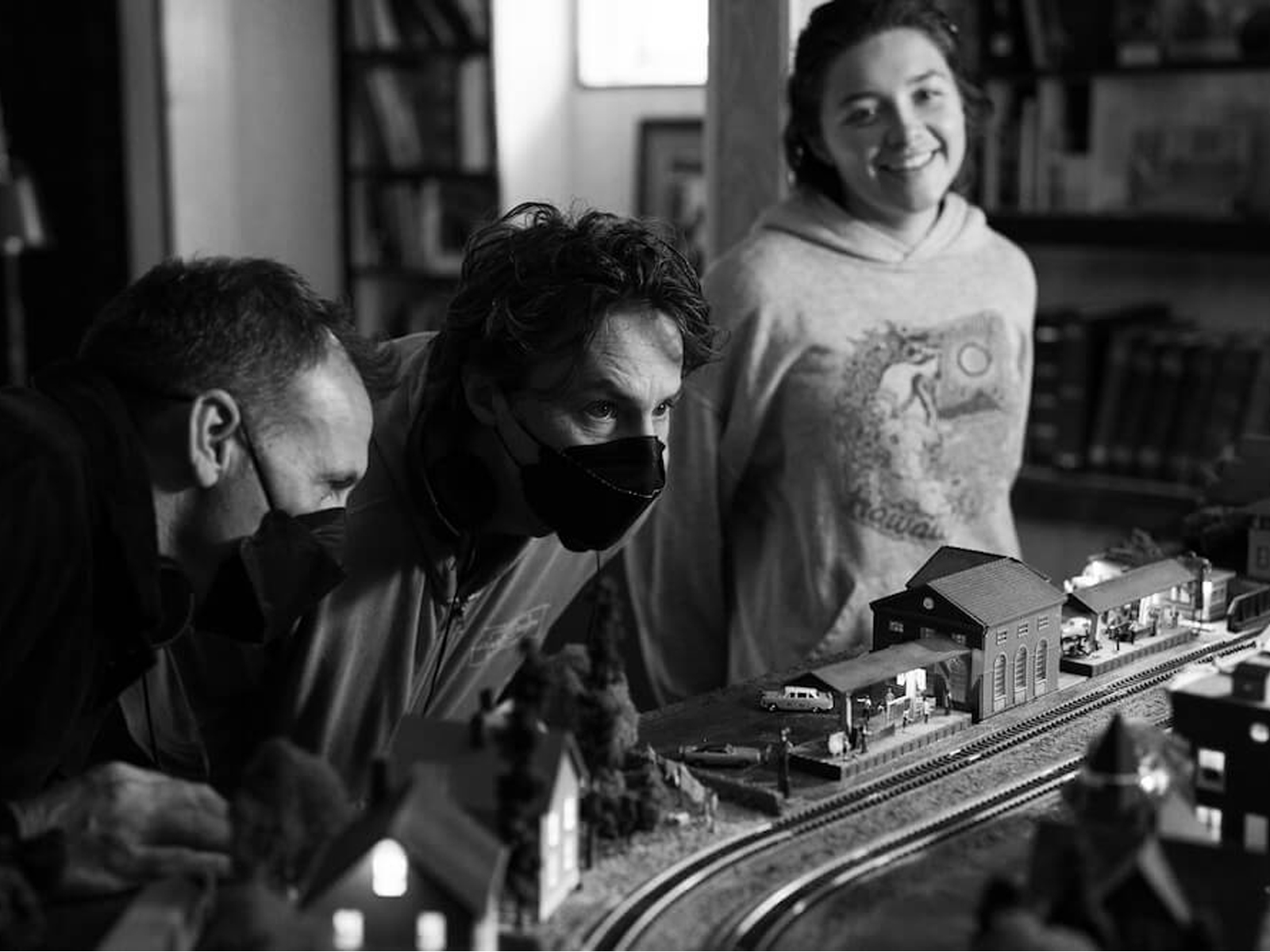
This article was shared with permission from Panavision.
–
Written and directed by Zach Braff, A Good Person tells the story of Allison (Florence Pugh), who unexpectedly befriends an elder gentleman named Daniel (Morgan Freeman) during a time of deep remorse and grief following her involvement in a tragic accident. To make the movie and infuse it with an emotional heft that would outweigh its indie-sized budget, Braff enlisted a team of close collaborators that included cinematographer Mauro Fiore, ASC.
Braff and Fiore turned to Panavision New York for their camera package, which included Panavised Alexa LF and Mini LF cameras and Panaspeed large-format optics. Here, the collaborators detail their approach to crafting the movie’s visual language.

Panavision: How did the two of you come to collaborate on this project?
Mauro Fiore, ASC: Zach and I had done a short film, In the Time it Takes to Get There, with the production company RSA, and Florence was in that as well. We had a really nice time working together, so when he offered me A Good Person, I accepted right away, and we headed off to New Jersey to make the movie.
Everybody was completely realistic about the goals and the approach. It was a lower-budget independent project, but that wasn’t going to hold us back from telling a great story. I remember something my father told me once: ‘A real master only needs a few tools.’ That always stuck in my mind. It was a great collaborative experience, and it was an important story to tell. It was really fun for me to do this film.
How would you describe the look of A Good Person?
Zach Braff: This film is way more still than anything I’ve ever directed before. I love moving the camera in unique and interesting ways. Directing Scrubs was very fun because the camera itself was such a character in the show — each episode’s director was trying to come up with more and more wacky ways to move the lens and transition the shots. But this is the first thing I’ve made where I chose to be very restrained and let the incredible actors and their fascinating faces just be. Of course there are some moves, but I left many of them on the cutting room floor. I liked the stillness.
Fiore: We went really classic with it. It’s a dramatic film about anxiety and trauma and addiction, but we wanted to keep an optimistic tone with what could be really tough subject matter and still have beauty in this tragedy. Specifically, we looked for as much color as we could get, filming in the fall so we could take advantage of the East Coast’s autumn beauty.
Our aesthetic concept for the film was to start out with romantic backlight and very classical photography and then slowly descend into darkness until we finally come out of it with Florence’s character. As you see her developing and finding the light, it was important to have sunlight that was always there as part of the frame. The sunlight would give us some hope, suggesting the possibility that she could move on after her traumatic experience.

Were there any particular visual references you looked at for inspiration?
Braff: Mauro and I talked about the loneliness in many of Edward Hopper’s paintings, and we shared all types of images back and forth. But, for me, the most helpful thing was working with concept artist Joanna Bush. This is something that has really helped me on projects of all sizes. I know that most often filmmakers use concept art for large-scale films, but Joanna captured the tone of what I wanted so perfectly with a handful of keyframes. It was very helpful in conveying that tone to all the members of the creative team and to the folks at MGM.
Fiore: We would also reflect on the locations and develop ideas around them. For example, there’s a scene in the park where Morgan Freeman’s character and his son finally reunite, and it looked like a Seurat painting — so we said, ‘Let’s make it look even more like a Seurat painting. Let’s develop that feeling.’

What brought you to Panavision for this project?
Braff: When I was going to film school at Northwestern, I loved looking at behind-the-scenes pictures of my favorite films, and the filmmakers always had that beautiful, giant Panavision film magazine. Then, when I was PA’ing in NYC in the mid to late ’90s, I’d be on these low-budget music videos and commercials, driving in a s—-y cube truck, and we’d pass the big, red Panavision camera trucks. I remember thinking, ‘One day I’ll be on a big, cool job with a Panavision camera truck.’
It wasn’t until I made Garden State with Larry Sher [ASC] that I finally got to shoot Super 35 with Panavision cameras and lenses. That was the only chance I got to shoot one of my films on film. After the industry’s move to digital, I fell in love with the look of Panavision anamorphic lenses. I just love how unique each lens is. I love the flares and all the imperfections. I don’t like lenses that are too ‘perfect,’ without some character.
Fiore: I’m really familiar with Panavision. Their service department and their lens department are just the best to work with, and [Panavision marketing executive] Lori Killam is a great representative for me. I knew they would be able to support me in this venture.
I specifically wanted to shoot large format. I had just worked with Panavision on Spider-Man: No Way Home, and I had shot with the Alexa LF and Panaspeed lenses. I really loved that combination and wanted to bring that same sort of feel to this film. We experimented with anamorphic, but ultimately I decided to shoot with Panaspeeds and frame for the 2.39:1 aspect ratio so we could get even more out of the sensor.

What characteristics did you see in the Panaspeeds that made them the right match for A Good Person?
Fiore: One of the things that Zach and I are really interested in is contrast, and those lenses offer such great contrast and sharpness to work with on a digital format. Also, the falloff is so beautiful and was right for the project. We also used two portrait lenses, which were really interesting because the center of the lens is the only part that’s sharp, and the outer part of the lens is all out of focus. We used those as Florence’s character was falling apart, to express her sense of separating from the world. Those lenses were beautiful.
Braff: We had one day of test shooting, so Mauro auditioned a few types of setups with Florence, and we chose the ones we liked. On set, we never really disagreed — although he makes this little, low growling noise when you start framing something he doesn’t like. [Laughs.]

What inspired each of you to become filmmakers — and what keeps you inspired today?
Braff: My parents loved movies and exposed my siblings and me at a young age to so many brilliant films well beyond our years at the time. My dad bought us a Super 8 camera, and it was an instant hit with all of us, making movies and projecting them for the family. What inspires me is the work of other filmmakers. I see shows and films that are so exciting and different, and it makes me want to continue to learn and grow and be better.
Fiore: Probably by the time I was 18 years old, I was really interested in photography. We had this incredible dark room in our high school, and I loved being able to take my own pictures and process and print my own film. This was very inspirational for me, but I never really thought this could be something I could do to make a living. No one in my family was ever involved in the arts really. I come from an immigrant family; I moved here when I was 7 years old. So the thought of a career as a photographer, that just wasn’t part of my family.
I went to a junior college, and I was going to be a sociology major, but then I took an intro to film class and discovered this heritage of Italian filmmaking — I discovered Fellini and all this history, films that became so inspirational for me. So I thought about going to film school, and that’s when I went to Columbia College in Chicago, and I realized very quickly that my interest was in cinematography. My schoolmate was Janusz Kaminski; he and I worked on so many projects together at school, and after he moved to Los Angeles, he called me and said, ‘You have to come out to Hollywood.’ So then we lived in a studio apartment in Hollywood, and as his career developed, mine developed along with him. I was his gaffer on several films, including Schindler’s List, and after that, it became possible for me to go out on my own and interview on other projects as a cinematographer.
As for what keeps me going as a cinematographer, I always find there’s a new way to tell a story, a new development or visual approach. When I read something that makes me think I could offer something visually to the storytelling, that inspires me. The subject matters and the screenplays and the story — that really inspires me. The balance of going from a bigger-budget film like Spider-Man to a film like A Good Person is also really interesting to me.
I try to approach every new film like I’ve never done a film before. The greatest feeling is when I’ve never done a film like this before — what am I going to do? There are so many possibilities to tell this story, and wow, this is going to be a challenge. That first approach to the empty canvas is still very exciting for me.

–
This article was shared with permission from Panavision.
